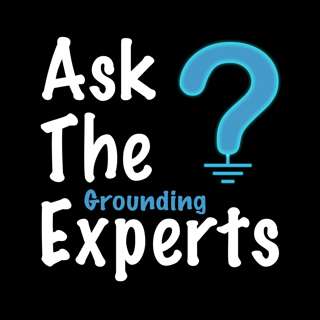
What is Continuity Testing? (Part 1)
In this episode, E&S Grounding Solutions President David Stockin begins a discussion on testing the continuity of a grounding system, focusing on the two-point method. In this method, resistance measurements are made at numerous points in the facility, taking each measurement with the same reference point. One measurement between two points does not offer much information about the complex network on conductors in the grounding system. Taking readings in multiple locations will hopefully ...
25 Maj 202112min

What is Resistance to Ground Measurement? (Part 2)
In this episode, E&S Grounding Solutions President David Stockin concludes a two-part series on resistance to ground measurements by discussing the induced frequency test, often called the “Clamp-On Method." In this method, a comparison is made between an induced current and a return current, while the test voltage is held constant. When the meter is clamped on to an electrode that is in series with a massive resistance loop with many parallel resistances, the meter can display a re...
12 Maj 202113min

What is Resistance to Ground Measurement? (Part 1)
In this episode, E&S Grounding Solutions President David Stockin sits down to chat about the three-point fall-of-potential method for conducting a resistance to ground measurement. In this method, there is a particular location for a potential probe that will help produce a reasonably accurate result for the test. However, it is important to take readings at multiple locations to see if there are any problems with the test setup and site conditions. The fall-of-potential method has limita...
5 Maj 202112min

What is the 4-Point Soil Resistivity Test? (Part 2)
In this episode, E&S Grounding Solutions President David Stockin continues a discussion on the Wenner four-point method for testing soil resistivity. Sounding should occur at least to the extent of the sphere of influence, which can be determined from the diagonal length of the grounding system. Selecting the proper intervals of test probe spacing is important to avoid a mathematical headache and obtain more accurate models of the soil resistivity. IEEE Standard 80 suggests taking soundin...
20 Apr 20219min

What is the 4-Point Soil Resistivity Test? (Part 1)
In this episode, E&S Grounding Solutions President David Stockin discusses the Wenner four-point method for testing soil resistivity. Selecting proper spacing of the four test probes must be considered when measuring the resistivity at various depths into the earth. It is important to investigate how the measurements may differ between seasons and weather conditions. The results of a soil resistivity test employing the Wenner method are an essential part of the soil model used when studyi...
14 Apr 20219min

What are the Common Tests for Grounding Systems?
In this episode, E&S Grounding Solutions President David Stockin chats about three tests commonly used to test a grounding system. A four-point test reveals properties about the soil surrounding the grounding system. A three-point test can be used to measure the resistance from one or more metal electrodes to the earth. A two-point test helps to confirm that an electrically continuous (very low impedance) path exists throughout the grounding system. The results of each test offer key insi...
6 Apr 20218min

What is the Difference Between Grounding and Bonding?
In this episode, E&S Grounding Solutions President David Stockin chats about the difference between ground (earthing) and bonding. OSHA defines grounding as the intentional connection of an object likely to become energized to earth. Bonding is to intentionally connect to objects likely to become energized, to ensure that there are no differences in potential. OSHA wants all fueling operations to have both "grounding" and "bonding" to ensure that no hazardous sparks could cause a fi...
16 Mars 20219min





















